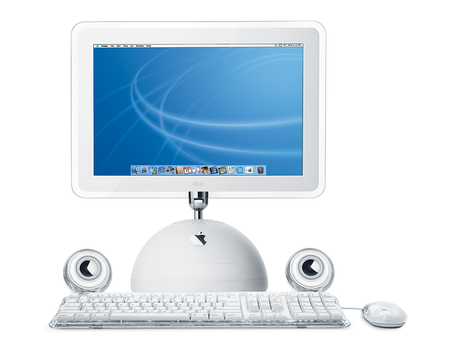

"COMPUTERS THEMSELVES, AND SOFTWARE
YET TO BE DEVELOPED, WILL REVOLUTIONIZE
THE WAY WE LEARN"
- STEVE JOBS
Below you can get more info Apple computers owned by me long time ago.
My passion for Apple computers started a long time ago with PowerMac G3 as my first trial computer to learn more about MacOSX. At the beginning it was love or hate type of relation. With time being I switched to a Mac and never looked back. On this website I will present some of the computers I owned. Their history and brilliant advertises connected to them.

In a sea of beige boxes, the colorful iMac cut a figure like no other computer. “It looks like it’s from another planet,” Jobs said at the time. “A good planet. A planet with better designers.” That designer was, of course, Ive. He had worked at Apple for a few years by this point (one of his earliest projects was the Newton MessagePad product line). But the iMac G3 represented the purest expression of his creativity yet. The iMac also effectively formed a bond between Jobs and Ive that lasted until the Apple co-founder’s death in 2011. The iMac G3 initially came in a kind of sea-green that Apple dubbed “Bondi Blue” (named after the water at an Australian beach). The product line later expanded to include a broad range of colors and patterns. Its translucent, plasticized design always struck me as both slightly retro and incredibly futuristic. The conflation made perfect sense in a decade like the ’90s, as people waxed nostalgic for the 1960s but looked forward to the new millennium.

Built around a 12.1” screen and a 300 MHz G3, this new notebook exuded friendliness. It had a comfortable, full-sized keyboard, a CD-ROM drive, USB and 6 hours of battery life. The real story, however, was about the design. Instead of metal, the iBook was made of durable white translucent plastic coupled with double-injected rubber around the edges for additional durability and color. The curves this rubber formed, coupled with its bright white interior, earned this computer the nickname of “Clamshell.” The first iBook came in Blueberry and Tangerine, like two of the iMacs of the day. The rubber cut across the lid of the machine, matching along the sides as it swooped to cover the entire bottom of the machine. The trackpad button and Apple logo1 under the screen brought splashes of color to the inside of the notebook. I think these Macs have more personality than any others. They’re fun and youthful, and proved popular with students and home consumers. It even had a handle.

Announced in September 1999, alongside the PowerMac G4 (PCI Graphics), the PowerMac G4 (AGP Graphics) was a major revision of the PowerMac line. Based on the Unified Motherboard Architecture, The G4 AGP was built around the MPC 7400 chip, which was dramatically faster than its predecessor, the PPC 750 (for a more detailed description of the 7400, click here.). The G4 AGP introduced a number of performance improvements, including AGP-based graphics, AirPort compatibility, a faster memory bus, DVD-ROM or RAM standard, an internal FireWire port, 2 separate USB buses for a combined 24 Mbs, a 2X (133 MHz) AGP slot, and up to 1.5 GB of RAM. The G4 AGP also introduced the new professional color, "graphite."

The original iMac was defined by the shape of the CRT display at its heart. Fairly early on in the process of designing it, Apple decided to set aside an alternative version that used a laptop-style flat-panel display as being too expensive and impractical. But four years later, flat-screen technology was finally ready to reach the mainstream, and the giant tube inside the six million iMacs Apple had sold felt like outmoded technology. The designers behind the original iMac set about reinventing the iMac for an era where the flat screen was at the forefront. What they came up with bore no resemblance to the biggest hit the Mac had ever had. Instead, the iMac G4 was all about that flat screen, floating on air, held aloft by a chromed stainless-steel arm, kept stable by the computer hardware in its white dome of a base. It was beautiful. A triumph of industrial design. A perfect match of form and function. A creation that deserves its place in museums, truly.